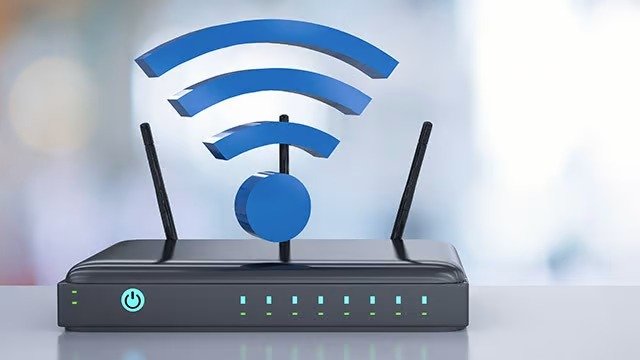Top 10 Vulnerabilities in Today’s Wi-Fi Networks
Wi-Fi networks have become an integral part of our daily lives, enabling seamless connectivity for a wide range of devices. However, this convenience comes with its own set of vulnerabilities that malicious actors can exploit. As technology evolves, so do the threats that target Wi-Fi networks. In today’s interconnected world, understanding these vulnerabilities is crucial to maintaining the security and privacy of our online activities.
What is the vulnerability of Wi-Fi?
The vulnerability of Wi-Fi lies in its susceptibility to various security threats. One prominent issue is the use of weak or default passwords, making networks easy targets for unauthorized access. Additionally, outdated encryption protocols like WEP can be exploited by hackers to intercept and decode data. The phenomenon of “rogue” access points presents another concern, where attackers mimic legitimate networks to trick users into connecting to malicious sources. Man-in-the-middle attacks exploit gaps in Wi-Fi security to intercept data transmissions. Lastly, insufficient network segmentation can expose sensitive devices to attacks from compromised devices within the same network. Regular updates, strong encryption, and user awareness are crucial in mitigating these vulnerabilities.Here are the top 10 vulnerabilities in today’s Wi-Fi networks:
- Weak Passwords: Many users still rely on weak or easily guessable passwords for their Wi-Fi networks. This provides a simple entry point for attackers to gain unauthorized access.
- Outdated Encryption Protocols: Older encryption standards likeWAP (Wired Equivalent Privacy) and even WPA (Wi-Fi Protected Access) have known vulnerabilities. Modern networks should use WPA3, which offers stronger security features.
- Router Misconfiguration: Poorly configured routers can expose networks to attacks. Default credentials, open ports, and mismanaged firewall settings can all compromise the network’s security.
- Rogue Access Points: Attackers can set up rogue access points with names similar to legitimate networks. Unsuspecting users might connect to these fake networks, giving attackers access to their data.
- Man-in-the-Middle Attacks: In these attacks, hackers intercept communication between devices and the router, potentially eavesdropping on sensitive data.
- KRACK Attacks: Key Reinstallation Attacks target vulnerabilities in the WPA2 protocol, allowing attackers to decrypt and intercept data transmitted over the network.
- Evil Twin Attacks: Similar to rogue access points, evil twin attacks involve creating a malicious clone of a legitimate network, tricking users into connecting to the attacker’s network instead.
- Password Cracking: Sophisticated attackers can use brute-force attacks or advanced techniques to crack Wi-Fi passwords and gain unauthorized access.
- Denial of Service (DoS) Attacks: Attackers can flood a network with traffic, overwhelming it and rendering it inaccessible to legitimate users.
- IoT Device Vulnerabilities: The proliferation of Internet of Things (IoT) devices introduces new entry points for attackers. Many of these devices have poor security measures, making them susceptible to compromise.
To mitigate these vulnerabilities and ensure the security of your Wi-Fi network, consider the following best practices:
Strong Passwords: Use strong, unique passwords for your network and regularly update them.
Firmware Updates: Keep your router’s firmware up to date to ensure that known vulnerabilities are patched.
Encryption: Use the latest encryption protocols, such as WPA3, to secure data transmission.
Network Segmentation: Separate guest networks from critical systems to minimize potential damage in case of a breach.
Disable Unused Features: Turn off any unnecessary features or services on your router to reduce potential attack vectors.
Intrusion Detection: Implement intrusion detection systems to monitor network traffic for any unusual or suspicious activity.
Regular Audits: Periodically review your network’s security settings and configurations.
Public Wi-Fi Caution: Avoid connecting to public Wi-Fi networks without proper security measures in place, such as a VPN.
IoT Security: Change default passwords on IoT devices and keep them updated with the latest security patches.
User Education: Educate users about the risks of connecting to unknown networks and how to identify potential threats.
What is the greatest vulnerability on the Internet today?
The greatest vulnerability on the Internet today lies in the ever-evolving realm of cybersecurity. As technology advances, so do the methods and sophistication of cyberattacks. From nation-state actors to organized cybercriminal groups, the potential threats encompass data breaches, ransomware attacks, phishing, and zero-day exploits. With the exponential growth of interconnected devices through the Internet of Things (IoT), the attack surface widens. Additionally, the human factor remains a critical vulnerability, as social engineering tactics manipulate users into divulging sensitive information. The challenge lies in staying ahead of these threats by implementing robust encryption, multi-factor authentication, regular security updates, and fostering digital literacy.
Penetrate Pro Apk
Penetrate Pro Apk was a popular mobile application utilized for testing the security of Wi-Fi networks. It gained attention due to its ability to assess the vulnerability of wireless networks, aiding users in identifying potential weaknesses in their network setups. By employing various penetration testing techniques, Penetrate Pro aimed to uncover security flaws and expose potential points of unauthorized access. However, it’s important to note that the use of such tools for malicious purposes is illegal and unethical. As of my last knowledge update in September 2021, always ensure you have the necessary permissions before using any security testing tools.
In conclusion, the vulnerabilities in today’s Wi-Fi networks are diverse and ever-evolving. It’s essential for users, businesses, and organizations to remain vigilant, stay informed about emerging threats, and take proactive steps to secure their networks and sensitive information. As technology advances, so too must our efforts to ensure the privacy and security of our online interactions.
ALSO READ : How To Hire Top- Tier AngularJS Developers For Your Coming Design?
ALSO READ : Unlocking Career Opportunities: How to Get a PMP Certification




